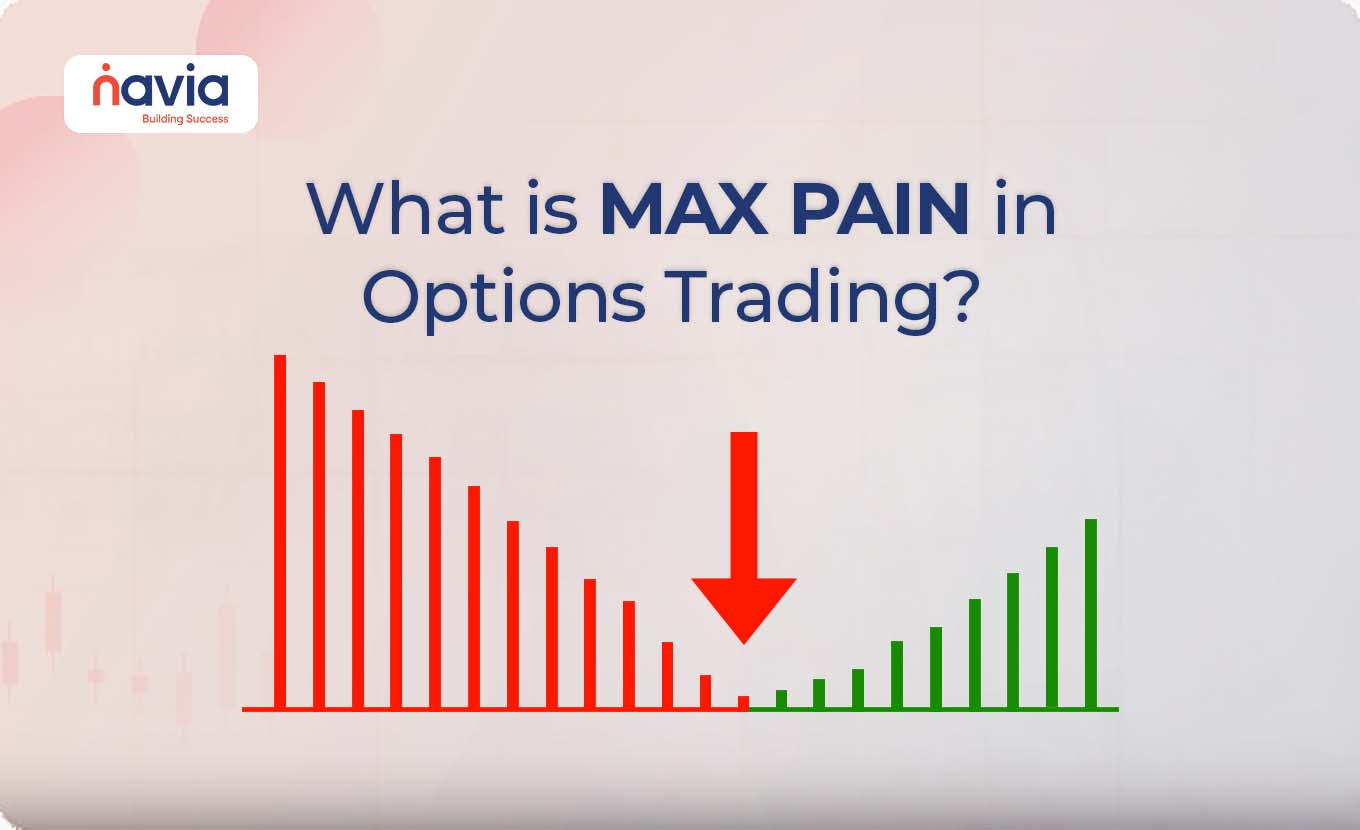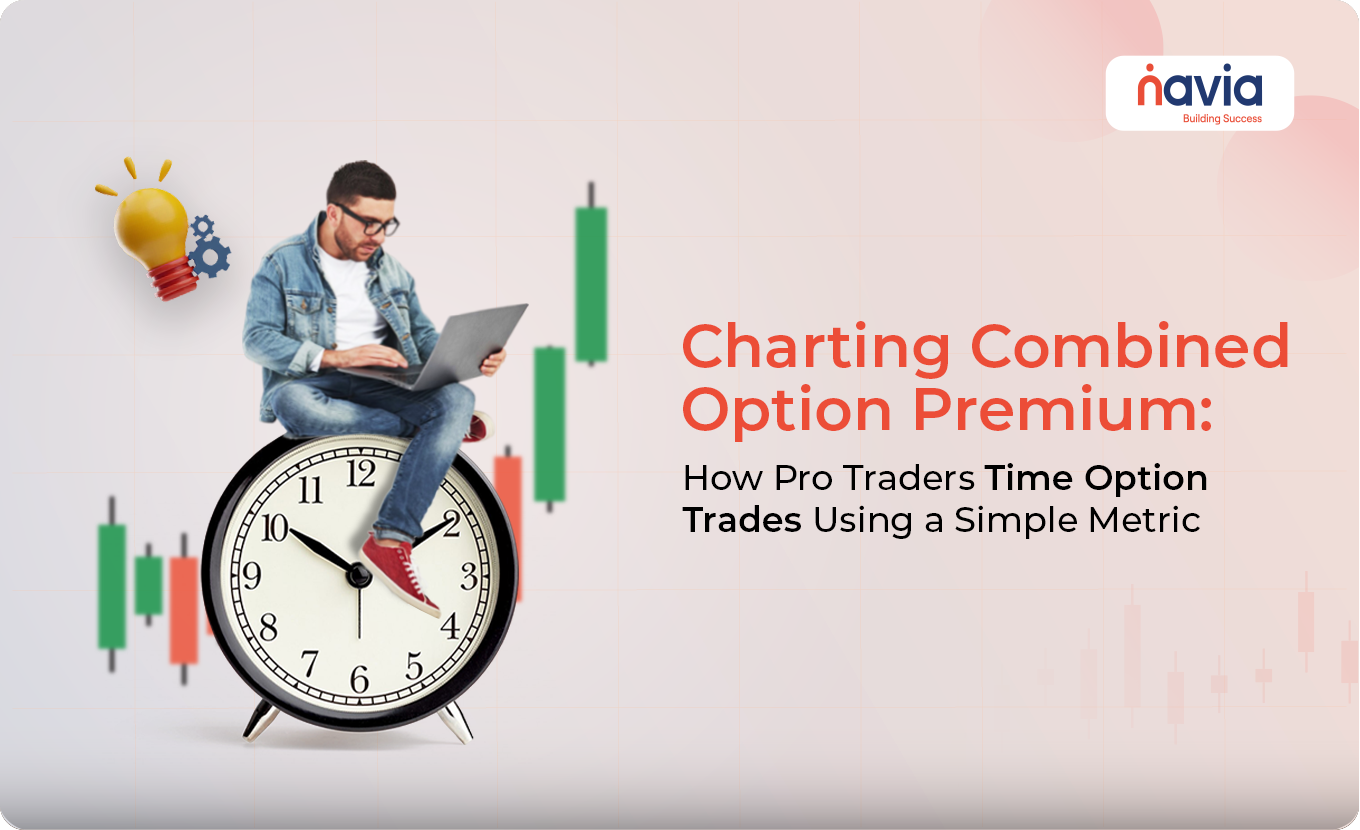Understanding Option Greeks for Profitable Options Trading: A Beginner’s Guide

Options trading can be a highly rewarding endeavor, but it also comes with its complexities. One of the key concepts that every options trader needs to understand is the “Option Greeks.” These are the essential tools that help traders assess the risks and potential rewards of their options positions. In this comprehensive guide, we’ll break down the Option Greeks—Delta, Gamma, Theta, Vega, and Rho—so that even a beginner can understand and use them to make informed trading decisions. Additionally, we’ll discuss how to view live Option Greeks using the Navia Mobile App, making it easier for you to manage your options trades on the go.
What Are Option Greeks?
Option Greeks are the different measures that help options traders understand how various factors affect the price of an options contract. Each Greek letter provides a different perspective on the risk and potential reward associated with an option. By understanding these Greeks, you can better predict how your options will perform under different market conditions and make more profitable trading decisions.
The Five Key Option Greeks
1. Delta (Δ)
Delta is one of the most crucial Option Greeks. It measures the rate of change of an option’s price (premium) relative to a one-point move in the price of the underlying asset. Essentially, Delta tells you how much the price of the option is expected to move if the underlying stock moves by one point.
Call Options: Delta for a call option ranges between 0 and 1. If a call option has a Delta of 0.5, it means that for every ₹1 increase in the price of the underlying asset, the price of the call option will increase by ₹0.50.
Put Options: Delta for a put option range between 0 and -1. If a put option has a Delta of -0.5, it means that for every ₹1 increase in the price of the underlying asset, the price of the put option will decrease by ₹0.50.
🔷 Understanding Delta: Delta is not just a measure of price movement; it also represents the probability that the option will expire in the money. For example, a Delta of 0.7 suggests a 70% chance that the option will end up in the money by expiration.
🔷 Practical Use of Delta: Traders often use Delta to hedge their positions. For instance, if you hold a long position in a stock, you might buy put options with a Delta that offsets your position, reducing your overall market risk.
2. Gamma (Γ)
Gamma measures the rate of change of Delta relative to a one-point move in the price of the underlying asset. In simpler terms, Gamma indicates how much the Delta will change if the underlying asset moves by one point.
🔷 Understanding Gamma: Gamma is crucial because it gives you an idea of how stable the Delta is. High Gamma values indicate that Delta is more sensitive to price changes in the underlying asset, which means the option’s price can change more rapidly.
🔷 Practical Use of Gamma: Traders who hold options with high Gamma need to be more vigilant as their Delta will fluctuate more significantly, requiring more active management of the position.
3. Theta (Θ)
Theta represents the rate at which an option’s price declines as it approaches its expiration date, assuming all other factors remain constant. Theta is often referred to as the “time decay” of an option.
🔷 Understanding Theta: Options lose value as they get closer to expiration because there’s less time for the underlying asset to move in a favorable direction. Theta is usually negative, indicating that the option’s price will decrease over time.
🔷 Practical Use of Theta: Theta is particularly important for traders who sell options. Since time decay works in favor of the seller, strategies like covered calls and cash-secured puts can benefit from a positive Theta.
4. Vega (ν)
Vega measures the sensitivity of an option’s price to changes in the volatility of the underlying asset. Volatility refers to the degree of variation in the price of the underlying asset over time.
🔷 Understanding Vega: When volatility increases, the price of options (both calls and puts) generally increases because there’s a greater chance that the option will end up in the money. Conversely, when volatility decreases, option prices tend to fall.
🔷 Practical Use of Vega: Vega is particularly useful when trading in volatile markets. Traders expecting a rise in volatility may buy options, as higher Vega means the options will increase in value if volatility spikes.
5. Rho (ρ)
Rho measures the sensitivity of an option’s price to changes in interest rates. While Rho is not as commonly used as the other Greeks, it’s still important in certain market conditions.
🔷 Understanding Rho: For call options, a rise in interest rates typically increases the option’s price, whereas, for put options, a rise in interest rates generally decreases the option’s price.
🔷 Practical Use of Rho: Rho becomes more relevant in markets where interest rates are fluctuating significantly. Traders might use Rho to assess the impact of central bank policies on their options positions.
How to Use Option Greeks Together
Understanding each Greek individually is crucial, but the real power of Option Greeks comes from using them together to analyze and manage your options positions.
Delta and Gamma: Use Delta to understand your position’s exposure to price changes in the underlying asset and Gamma to gauge how stable that exposure is.
Theta and Vega: Monitor Theta to manage the time decay of your options, especially if you’re holding long positions. Use Vega to assess how changes in volatility will impact your position, which is critical in volatile markets.
Rho: Keep an eye on Rho if interest rates are expected to change, as this will affect your options’ prices.
Practical Example: Using Option Greeks in a Trade
Let’s say you’re considering buying a call option on a stock that’s currently trading at ₹1,000. The option has the following Greeks:
🔶 Delta: 0.6
🔶 Gamma: 0.05
🔶 Theta: -0.02
🔶 Vega: 0.1
🔶 Rho: 0.03
Delta tells you that for every ₹1 increase in the stock price, the option’s price will increase by ₹0.60. Gamma indicates that if the stock price increases by ₹1, Delta will increase to 0.65, making the option more sensitive to further price changes. Theta tells you that the option’s price will decrease by ₹0.02 each day due to time decay. Vega shows that for every 1% increase in volatility, the option’s price will increase by ₹0.10. Finally, Rho suggests that if interest rates increase by 1%, the option’s price will rise by ₹0.03.
Using this information, you can decide whether the option is a good buy. If you expect the stock price to rise quickly and volatility to increase, this option might be attractive despite the time decay.
How to View Live Option Greeks Using Navia Mobile App
Understanding Option Greeks is crucial, but being able to monitor them in real-time is just as important for successful options trading. The Navia Mobile App offers a seamless way to view live Option Greeks, helping you make informed decisions on the go.
➝ Log into Navia Mobile App: Start by logging into your Navia account on the mobile app. If you’re not yet a user, you can easily sign up directly through the app.
➝ Access the Options Section: Navigate to the options trading section where you can view your current positions or search for new options contracts.
➝ Select the Option: Choose the specific option you want to analyze. The app provides a detailed view of the selected option, including all relevant Option Greeks—Delta, Gamma, Theta, Vega, and Rho.
➝ Monitor in Real-Time: The app updates the Greeks in real-time as market conditions change, allowing you to stay on top of your positions and adjust your strategies as needed.
➝ Make Informed Decisions: Use the live data provided by the app to make informed trading decisions, whether you’re looking to enter, exit, or adjust a position.
The Navia Mobile App’s user-friendly interface and real-time updates make it an essential tool for anyone trading options, whether you’re a beginner or a seasoned pro.

Conclusion
Option Greeks are essential tools for anyone serious about options trading. They provide valuable insights into how different factors—such as price movements, time decay, volatility, and interest rates—affect the value of an options contract. By understanding and applying these Greeks in your trading strategy, you can better manage your risks and maximize your potential returns.
Whether you’re just starting with options trading or looking to refine your strategy, mastering the Option Greeks is a critical step toward becoming a more profitable trader. And with tools like the Navia Mobile App, you can easily monitor these important metrics in real-time, ensuring you have the information you need to make smart, informed decisions.
By integrating the use of Option Greeks into your trading strategy and leveraging the convenience of the Navia Mobile App, you can enhance your ability to trade options successfully and profitably. Happy trading!
DISCLAIMER: Investments in the securities market are subject to market risks, read all the related documents carefully before investing. The securities quoted are exemplary and are not recommendatory. Brokerage will not exceed the SEBI prescribed limit.
We’d Love to Hear from you-
Frequently Asked Questions
1. Which Option Greek measures the change in delta with respect to change in price of underlying asset?
Gamma is used to measure the change in delta with respect to change in price of underlying asset.
2. What are the 5 types of Greeks in Options trading?
The 5 types of Greeks in options is Delta (Δ), Gamma (Γ), Theta (Θ), Vega (ν) and Rho (ρ).
3. What do you mean by Option Greeks?
Option Greeks are different type of indicator or measure that helps option traders understand the factors affecting the price of options contract. There are 5 types of option Greeks used, that provides different perspective on risk and reward with an option contract. Using these option Greeks, a trader can predict how well the options can perform under market conditions and take decisions accordingly.





